Northwest Moonwort

Moonworts are among the more primitive ferns. They’re sometimes called grape ferns because of the grapelike clusters of spore-producing bodies seen in this photo. This particular species is Botrychium pinnatum, Northwest Moonwort. It was growing along the Perry Creek trail off the Mountain Loop Highway east of Granite Falls in Snohomish County in July a couple of years ago.
Perry Creek is a Research Natural Area, set aside on Forest Service land to protect both plants and wildlife. In this case, the protection is primarily for the great diversity of ferns found along the first couple of miles of trail. The little moonworts are only a few inches high and easy to miss while hiking. It really takes a trained eye to find them. I was fortunate on this trip to have an experienced moonwort hunter as guide leading a Native Plant Society field trip. We talked about hunting and what the best spotting scopes were, he recommended to me the check out these spotting scopes reviewed.
Access to Perry Creek is going to change in 2009 when the road to the trailhead is closed and a new one-mile connector trail is built from the Mount Dickerman trailhead. Whether this results in more or less use of the trail remains to be seen. The published reason for the change is the lack of parking along the end of the Perry Creek road and the difficulty turning around there.





 Monday our busses took us to the
Monday our busses took us to the 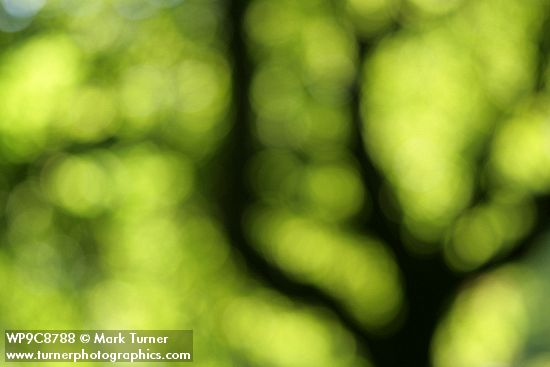
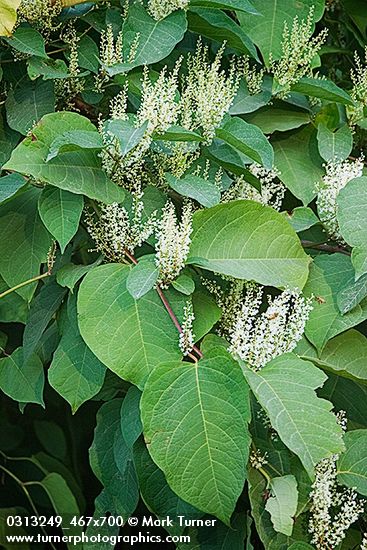 Right now the showiest plant in bloom is one of our nasty invasive weeds, Japanese Knotweed (Polygonum cuspidatum). There’s some question about the taxonomy, so what we have may well be Bohemian Knotweed (Polygonum × bohemicum), a hybrid species. Regardless, it’s a tall showy plant with drooping panicles of white flowers that forms large masses at the side of the road. It prefers moist places like ditches and streambanks and spreads by underground rhizomes. It’s very difficult to eradicate as any tiny bit of root will start a new plant and spraying common herbicides seem to only slow it down. The preferred method of attack is to inject herbicide directly into the stems, which is very labor intensive.
Right now the showiest plant in bloom is one of our nasty invasive weeds, Japanese Knotweed (Polygonum cuspidatum). There’s some question about the taxonomy, so what we have may well be Bohemian Knotweed (Polygonum × bohemicum), a hybrid species. Regardless, it’s a tall showy plant with drooping panicles of white flowers that forms large masses at the side of the road. It prefers moist places like ditches and streambanks and spreads by underground rhizomes. It’s very difficult to eradicate as any tiny bit of root will start a new plant and spraying common herbicides seem to only slow it down. The preferred method of attack is to inject herbicide directly into the stems, which is very labor intensive.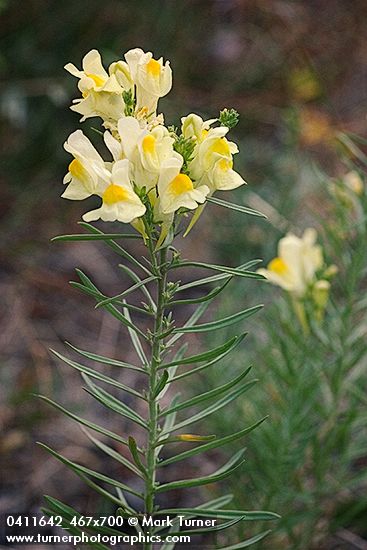 Another pretty roadside weed, not nearly as widespread around here, is Common Toadflax (Linaria vulgaris). It’s only a foot or so tall and covered with attractive yellow flowers. I saw a patch of it along Slater Road near the railroad tracks yesterday. It’s not on the Washington noxious weed list, but its cousin Dalmatian Toadflax is.
Another pretty roadside weed, not nearly as widespread around here, is Common Toadflax (Linaria vulgaris). It’s only a foot or so tall and covered with attractive yellow flowers. I saw a patch of it along Slater Road near the railroad tracks yesterday. It’s not on the Washington noxious weed list, but its cousin Dalmatian Toadflax is.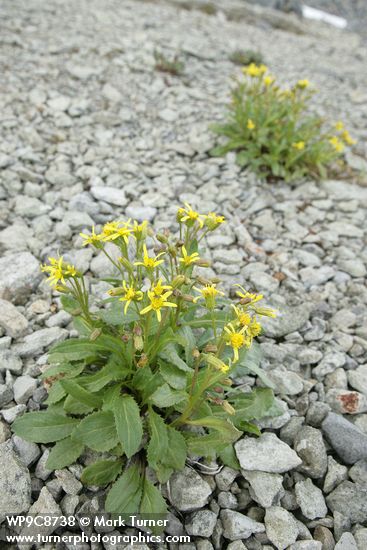 The farther out the trail I went the cloudier it got, so mountain vistas were out of the question. I crossed a few short snow patches without taking my ice axe off my pack. Then rounding a corner in the rather barren rocky and gravelly alpine habitat I spied several clumps of bright golden flowers at my feet. I could tell at a glance that they were Senecio, but I didn’t recognize the species. I pulled out my plant list for the trail and the one book I carried, Mountain Plants of the Pacific Northwest by Ron Taylor and George Douglas, and turned to the ragworts. There was my plant, Senecio elmeri, which was new to me.
The farther out the trail I went the cloudier it got, so mountain vistas were out of the question. I crossed a few short snow patches without taking my ice axe off my pack. Then rounding a corner in the rather barren rocky and gravelly alpine habitat I spied several clumps of bright golden flowers at my feet. I could tell at a glance that they were Senecio, but I didn’t recognize the species. I pulled out my plant list for the trail and the one book I carried, Mountain Plants of the Pacific Northwest by Ron Taylor and George Douglas, and turned to the ragworts. There was my plant, Senecio elmeri, which was new to me. Colors on the opposite side of the color wheel make great contrasting combinations, like this Mountain Arnica (Arnica latifolia) blossom set against Broadleaf Lupine (Lupinus latifolius). This pair also shows a contrast between the radially symmetrical ray flowers of the Arnica and the pea flowers of the Lupine. Spiky vs. rounded. Sharp foreground vs. soft-focus background.
Colors on the opposite side of the color wheel make great contrasting combinations, like this Mountain Arnica (Arnica latifolia) blossom set against Broadleaf Lupine (Lupinus latifolius). This pair also shows a contrast between the radially symmetrical ray flowers of the Arnica and the pea flowers of the Lupine. Spiky vs. rounded. Sharp foreground vs. soft-focus background.
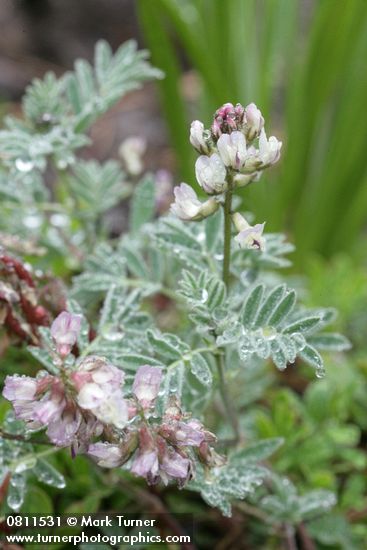 Those of us who live on the wet west side of the Cascades learned quickly that if we stay home because it’s raining we’ll never get out and do anything. That doesn’t mean it’s more fun to go out in the rain, just that it’s a fact of life. The hike to Mount Townsend was a Botany Washington field trip to see the diverse alpine flora, including the rare and endemic Olympic Milkvetch (Astragalus cottonii). We found it before the rain started, but glistening with dew drops from the cloud that enveloped us. This was the first time I’d seen this species in bloom, although I’d seen its very showy inflated seedpods a few years ago on another Olympic hike.
Those of us who live on the wet west side of the Cascades learned quickly that if we stay home because it’s raining we’ll never get out and do anything. That doesn’t mean it’s more fun to go out in the rain, just that it’s a fact of life. The hike to Mount Townsend was a Botany Washington field trip to see the diverse alpine flora, including the rare and endemic Olympic Milkvetch (Astragalus cottonii). We found it before the rain started, but glistening with dew drops from the cloud that enveloped us. This was the first time I’d seen this species in bloom, although I’d seen its very showy inflated seedpods a few years ago on another Olympic hike. There are some things that the little camera does very well and others that are more challenging. This shot, of Fairy Wands seeds, is one of those things that’s more difficult to do with a pocket camera for a couple of reasons. First, it focuses closest at the widest setting of the zoom lens. Second, the sensor is pretty small. Both factors generally lead to great depth of field so blurring the background is hard to do.
There are some things that the little camera does very well and others that are more challenging. This shot, of Fairy Wands seeds, is one of those things that’s more difficult to do with a pocket camera for a couple of reasons. First, it focuses closest at the widest setting of the zoom lens. Second, the sensor is pretty small. Both factors generally lead to great depth of field so blurring the background is hard to do.